Life Cycle of a Star
All stars form in nebulae, which are huge clouds of gas and dust. Though they shine for many thousands, and even millions of years, stars do not last forever. The changes that occur in a star over time and the final stage of its life depend on a star’s size.
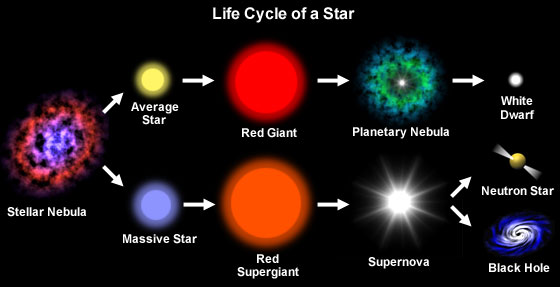
Credit: NASA
Nuclear reactions at the centre (or core) of a star provides energy which makes it shine brightly. This stage is called the ‘main sequence‘. The exact lifetime of a star depends very much on its size. Very massive stars use up their fuel quickly. This means they may only last a few hundred thousand years. Smaller stars use up fuel more slowly so will shine for several billion years.
Eventually, the hydrogen which powers the nuclear reactions inside a star begins to run out. The star then enters the final phases of its lifetime. All stars will expand, cool and change colour to become a red giant. What happens next depends on how massive the star is.
A smaller star, like the Sun, will gradually cool down and stop glowing. During these changes it will go through the planetary nebula phase, and white dwarf phase. After many thousands of millions of years it will stop glowing and become a black dwarf.
A massive star experiences a much more energetic and violent end. It explodes as a supernova. This scatters materials from inside the star across space. This material can collect in nebulae and form the next generation of stars. After the dust clears, a very dense neutron star is left behind. These spin rapidly and can give off streams of radiation, known as pulsars.
If the star is especially massive, when it explodes it forms a black hole.
==============================================================
What Happens When a Star Dies?
Explore the galactic phenomenon of exploding supernovas and what happens when a star dies. What happens to the elements left behind?
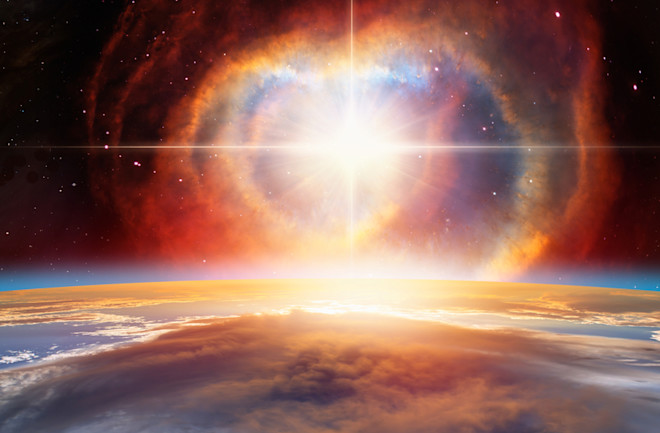
How Long Do Stars Live?
The sun, for example, is a 4.5 billion-year-old star that will continue its lifespan for another 10 billion years. The sun lights up through a combination of hydrogen and helium in a reaction called fusion. At some point, the sun will use up all the hydrogen in its core and begin to burn out.
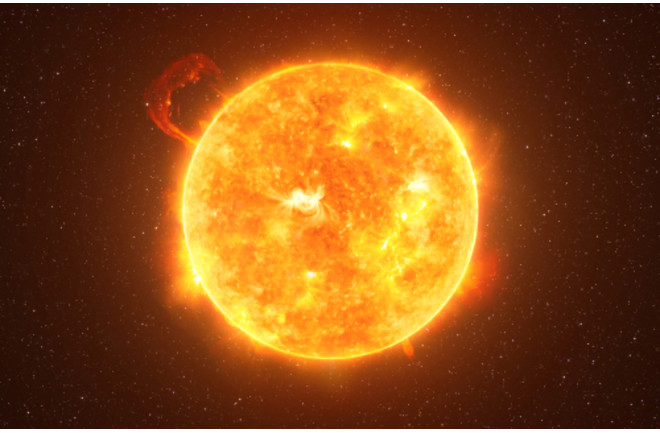
A Star Must Die
According to NASA, the sun will no longer have enough heat to support it against gravity, and as a result, it turns into a fiery red ball burning from above that will eventually consume the Earth. According to NASA, “the atmosphere [of the sun] will envelope the Earth, and our planet will be consumed in a fiery death.”
The sun’s collapse happens over billions of years, but it’s no less dramatic. Once gravity causes a star to collapse on itself, it will take another 100 million years for a star to deflate and form a persistent red cloud. Eventually, around 10 million years later, all that is left is a hot core of carbon and gasses that form a “planetary nebula.” As the star further burns out, it will diminish into a white dwarf planet.
What Happens When a Star Dies?
But while the sun may seem huge from our vantage point, it’s considered a baby in terms of stars. And bigger stars go out with a bigger bang. The death of a larger star, for example, around 10 times as bright as the sun, results in a supernova explosion, the biggest explosion we humans have ever seen. And supernova explosions happen in a matter of seconds.
Supernova Star vs. Smaller Star Explosions
According to NASA, a supernova star is considered the “last hurrah of a dying star.” The nuclear fuel burning at the core of a massively bright star causes so much heat, pressure and energy that the star isn’t able to collapse like a smaller star because the intense pressure at its core is still fighting the gravity pushing inward.
Eventually, just like the smaller star, the fuel of a supernova star will run out and gravity will succeed in crushing the star’s core. It happens so rapidly that it creates intense shock waves throughout the galaxy. It can even cause the formation of a black hole, the densest portion of the solar system when gravity is pulling so hard that even light isn’t able to escape.
Exploding Supernovas
In Nov. 2022, the Hubble Space Telescope captured a supernova explosion that happened 11 billion years ago, when the universe was a fifth of the age that it is today. The telescope could take images at different stages of the explosion, which showed it moving from hot to cold in a series of bright blue to red images that appeared before it burned out. This was the first time that we were able to witness the death of a massive star.
Supernova explosions aren’t just important because they’re the end of a dying star. They also create the perfect breeding ground for future stars. Without them, space would have no other carbon or oxygen, the elements that make life on Earth possible. Stars live, and then they die, but in that time in between, they magically light up the skies above.
=============================================================
How Will Life on Earth End?
Asteroid strikes, supernovae blasts and other calamities could take out humanity. But no matter what, a cataclysmic event 1 billion years from now will rob the planet of oxygen, wiping out life.
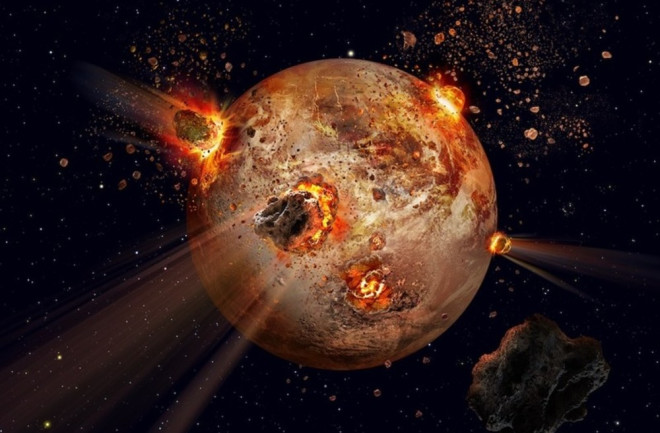
Yet, life has always rebounded. New species emerge. The cycle repeats.
So, what would it take to kill off life in full? Well, it turns out that while humanity might be surprisingly fragile, it’s not easy to sterilize an entire planet. Nonetheless, below are just a few possible doomsday events that could permanently extinguish all life on Earth — and the last one is likely unavoidable.
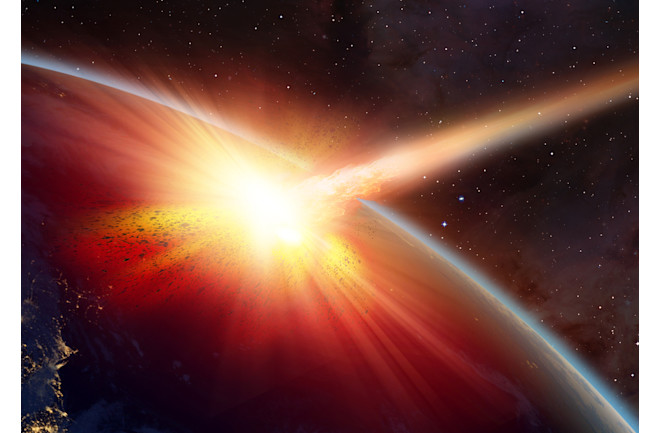
Asteroid Impact Apocalypse
When a city-sized asteroid struck the Gulf of Mexico 66 million years ago, it was game over for the dinosaurs, as well as most other species on Earth at the time. And while our ancestors hadn’t yet evolved, the impact was perhaps the single most important event in human history. Without that asteroid strike, dinosaurs might have continued to rule the Earth, leaving us mammals still cowering in the shadows.
Humans, however, won’t always be on the winning side of such random events. A future asteroid could just as easily take out every person on Earth. Fortunately, that’s unlikely to happen anytime soon. Based on the geological record of cosmic impacts, Earth gets hit by a large asteroid roughly every 100 million years, according to NASA. However, smaller asteroid impacts do happen all the time. There’s even evidence that some people may have been killed by small meteorite impacts within the past few thousand years.
But what are the chances that our planet will ever be struck by an asteroid massive enough to wipe out all life on Earth? Simulations published in Nature back in 2017 suggest it would take a truly gigantic space rock to accomplish such a feat. Killing all life on Earth would require an impact that literally boils away the oceans. And only asteroids like Pallas and Vesta — the solar system’s largest — are big enough to do that. There is evidence that infant Earth was struck by a large planetoid called Theia. But these days, collisions of such large objects are extremely unlikely.

Death by Deoxygenation
For a more likely glimpse of an Earth-altering cataclysm, we need to look to the distant past.
Nearly 2.5 billion years ago, a period called the Great Oxidation Event gave us the breathable atmosphere we all now depend on. An eruption of cyanobacteria, sometimes called blue-green algae, filled our atmosphere with oxygen, creating a world where multicellular life-forms could take hold, and where creatures like humans could ultimately breathe.
However, one of Earth’s great die-offs, an event 450 million years ago called the Late Ordovician mass extinction, likely happened because the inverse took place. The planet saw a sudden drop in oxygen levels that lasted for several million years.
What could have caused such an extreme event? During the Ordovician period, the continents were one jumbled mass called Gondwana. Most life on Earth still lived in the oceans, but plants were beginning to emerge on land. Then, near the end of the Ordovician, a sweeping climate shift left the supercontinent covered with glaciers. That global cooling alone was enough to start killing off species.
But then a second pulse of the extinction ramped up as oxygen levels plummeted. Scientists see evidence of this shift in seafloor samples collected from around the world. Some researchers think that the glaciers were responsible for fundamentally changing the layers of the oceans, which have unique temperatures and specific concentrations of elements like oxygen. Yet, the exact cause of the oxygen drop is still up for debate.
Whatever the cause, the end result is that more than 80 percent of life on Earth died during the Late Ordovician mass extinction, according to some estimates.
So, it may have happened before, but could a deoxygenation event happen again? In an eerie comparison to today, researchers involved in the recent Nature Communications study say that climate change is already reducing oxygen levels in our oceans, potentially killing off marine species.
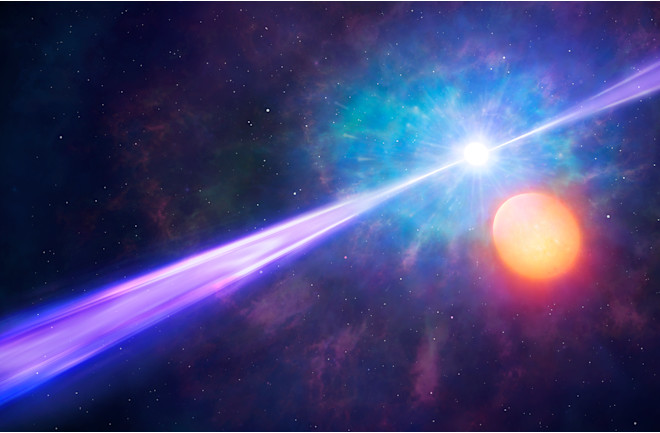
Gamma-Ray Burst Extinction
Even if a sudden spate of global cooling sparked the Late Ordovician mass extinction, what set that in motion in the first place? Over the years, numerous astronomers have suggested the culprit might have been a gamma-ray burst (GRB).
GRBs are mysterious events that seem to be the most violent and energetic explosions in the cosmos, and astronomers suspect they’re tied to extreme supernovas. However (and thankfully), we haven’t yet seen a burst close enough to us to fully understand what’s going on. So far, GRBs have only been spotted in other galaxies.
But if one did happen in the Milky Way, as has likely happened in the past, it could cause a mass extinction on Earth. A GRB pointed in our direction might last just 10 seconds or so, but it could still destroy at least half Earth’s ozone in that short period of time. As humans have learned in recent decades, even a relatively small amount of ozone depletion is enough to chip away at our planet’s natural sunscreen, causing serious problems. Wiping out the ozone on a large enough scale could wreak havoc on food chains, killing off huge numbers of species.
A GRB would wipe out the lifeforms that live in the upper levels of the ocean, which currently contribute significant amounts of oxygen to our atmosphere. And, it turns out, gamma rays also break apart atmospheric oxygen and nitrogen. These gasses get converted into nitrogen dioxide, which is more commonly known as the smog that blocks out the Sun above heavily polluted cities. Having this smog blanketing the entire Earth would block out sunshine and kickstart a global ice age.
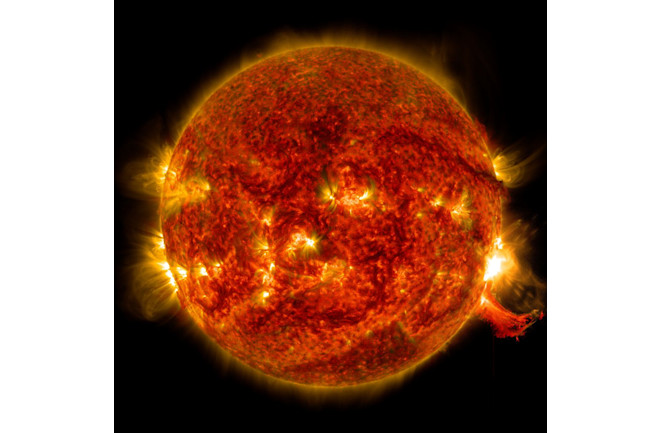
End of the Sun
Any of the devastating scenarios above, while undoubtedly terrible for life, are just a fraction as bad as future Earth’s ultimate fate. Gamma-ray burst or not, in about a billion years, most life on Earth will eventually die anyway due to a lack of oxygen. That’s according to a different study published in March in the journal Nature Geoscience.
The researchers suggest that our oxygen-rich atmosphere is not a permanent feature of the planet. Instead, in about a billion years, solar activity will cause atmospheric oxygen to plummet back down to the level it was at before the Great Oxidation Event. To determine this, the authors combined climate models and biogeochemistry models to simulate what will happen to the atmosphere as the Sun ages and puts out more energy.
They found that, eventually, Earth reaches a point where atmospheric carbon dioxide breaks down. At that point, oxygen-producing plants and organisms that rely on photosynthesis will die out. Our planet won’t have enough lifeforms to sustain the oxygen-rich atmosphere humans and other animals require.
The precise timing of when that starts and how long it takes — the deoxygenation process could take as few as 10,000 years — depends on a broad range of factors. But, in the end, the authors say this cataclysm is an unavoidable one for the planet.
Luckily, humanity still has another billion years to figure out other plans.
======================================================
Why Is Space So Dark Even Though The Universe Is Filled With Stars?
Brian Jackson, Boise State University
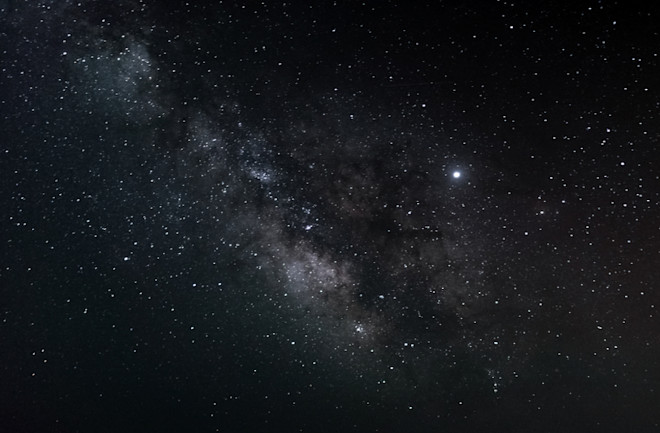
Astronomers estimate that there are about 200 billion trillion stars in the observable universe. And many of those stars are as bright or even brighter than our sun. So, why isn’t space filled with dazzling light?
I am an astronomer who studies stars and planets – including those outside our solar system – and their motion in space. The study of distant stars and planets helps astronomers like me understand why space is so dark.
You might guess it’s because a lot of the stars in the universe are very far away from Earth. Of course, it is true that the farther away a star is, the less bright it looks – a star 10 times farther away looks 100 times dimmer. But it turns out this isn’t the whole answer.
Imagine a bubble
Pretend, for a moment, that the universe is so old that the light from even the farthest stars has had time to reach Earth. In this imaginary scenario, all of the stars in the universe are not moving at all.
Picture a large bubble with Earth at the center. If the bubble were about 10 light years across, it would contain about a dozen stars. Of course, at several light years away, many of those stars would look pretty dim from Earth.
If you keep enlarging the bubble to 1,000 light-years across, then to 1 million light years, and then 1 billion light years, the farthest stars in the bubble will look even more faint. But there would also be more and more stars inside the bigger and bigger bubble, all of them contributing light. Even though the farthest stars look dimmer and dimmer, there would be a lot more of them, and the whole night sky should look very bright.
It seems I’m back where I started, but I’m actually a little closer to the answer.
Age matters
In the imaginary bubble illustration, I asked you to imagine that the stars are not moving and that the universe is very old. But the universe is only about 13 billion years old.
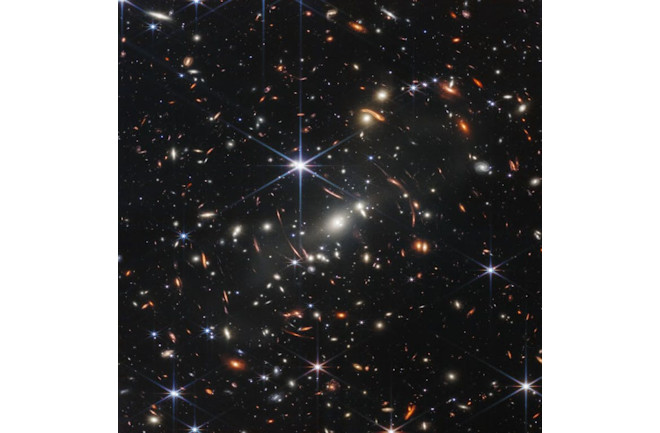
Even though that’s an amazingly long time in human terms, it’s short in astronomical terms. It’s short enough that the light from stars more distant than about 13 billion light years hasn’t actually reached Earth yet. And so the actual bubble around Earth that contains all the stars we can see only extends out to about 13 billion light years from Earth.
There just are not enough stars in the bubble to fill every line of sight. Of course, if you look in some directions in the sky, you can see stars. If you look at other bits of the sky, you can’t see any stars. And that’s because, in those dark spots, the stars that could block your line of sight are so far away their light hasn’t reached Earth yet. As time passes, light from these more and more distant stars will have time to reach us.
The Doppler shift
You might ask whether the night sky will eventually light up completely. But that brings me back to the other thing I told you to imagine: that all of the stars are not moving. The universe is actually expanding, with the most distant galaxies moving away from Earth at nearly the speed of light.
Because the galaxies are moving away so fast, the light from their stars is pushed into colors the human eye can’t see. This effect is called the Doppler shift. So, even if it had enough time to reach you, you still couldn’t see the light from the most distant stars with your eyes. And the night sky would not be completely lit up.
If you wait even longer, eventually the stars will all burn out – stars like the sun last only about 10 billion years. Astronomers hypothesize that in the distant future – a thousand trillion years from now – the universe will go dark, inhabited by only stellar remnants like white dwarfs and black holes.
Even though our night sky isn’t completely filled with stars, we live in a very special time in the universe’s life, when we’re lucky enough to enjoy a rich and complex night sky, filled with light and dark.